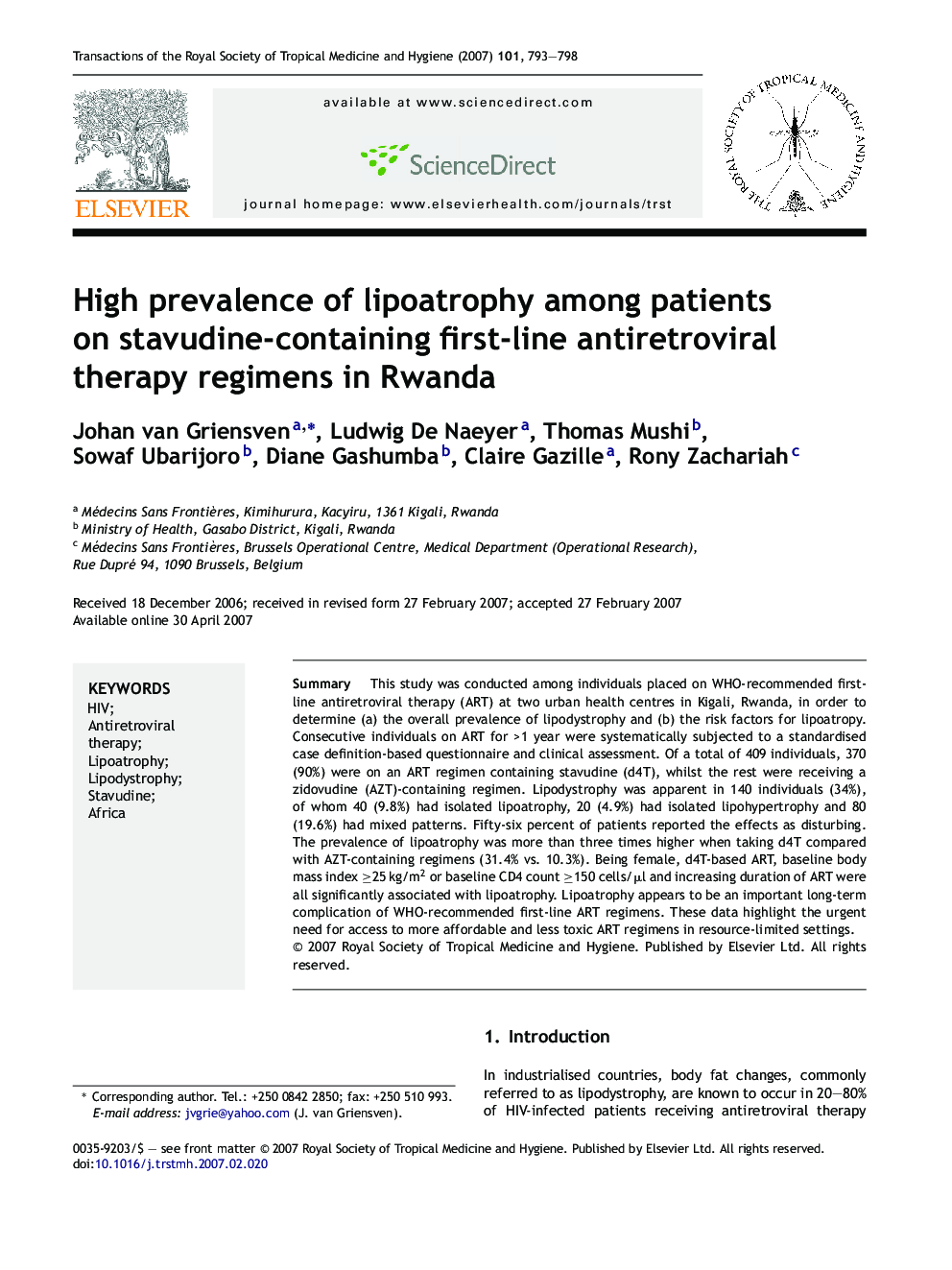| Article ID | Journal | Published Year | Pages | File Type |
|---|---|---|---|---|
| 3421125 | Transactions of the Royal Society of Tropical Medicine and Hygiene | 2007 | 6 Pages |
Abstract
This study was conducted among individuals placed on WHO-recommended first-line antiretroviral therapy (ART) at two urban health centres in Kigali, Rwanda, in order to determine (a) the overall prevalence of lipodystrophy and (b) the risk factors for lipoatropy. Consecutive individuals on ART for >1 year were systematically subjected to a standardised case definition-based questionnaire and clinical assessment. Of a total of 409 individuals, 370 (90%) were on an ART regimen containing stavudine (d4T), whilst the rest were receiving a zidovudine (AZT)-containing regimen. Lipodystrophy was apparent in 140 individuals (34%), of whom 40 (9.8%) had isolated lipoatrophy, 20 (4.9%) had isolated lipohypertrophy and 80 (19.6%) had mixed patterns. Fifty-six percent of patients reported the effects as disturbing. The prevalence of lipoatrophy was more than three times higher when taking d4T compared with AZT-containing regimens (31.4% vs. 10.3%). Being female, d4T-based ART, baseline body mass index â¥25 kg/m2 or baseline CD4 count â¥150 cells/μl and increasing duration of ART were all significantly associated with lipoatrophy. Lipoatrophy appears to be an important long-term complication of WHO-recommended first-line ART regimens. These data highlight the urgent need for access to more affordable and less toxic ART regimens in resource-limited settings.
Related Topics
Life Sciences
Immunology and Microbiology
Applied Microbiology and Biotechnology
Authors
Johan van Griensven, Ludwig De Naeyer, Thomas Mushi, Sowaf Ubarijoro, Diane Gashumba, Claire Gazille, Rony Zachariah,
